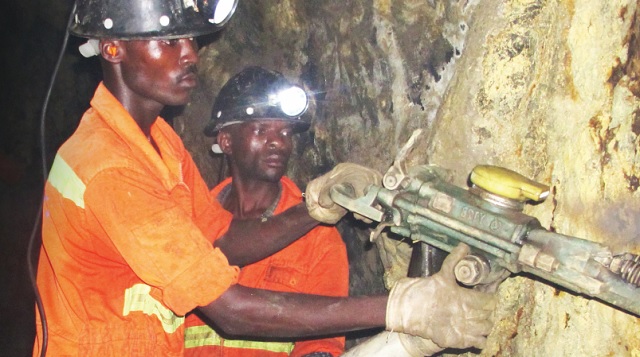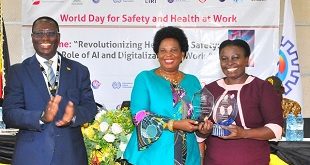
It’s a great coup for Sipa, say partners as deal dominates meeting of experts from 40 countries
Kampala, Uganda | RONALD MUSOKE | The British metal and mining corporation, Rio Tinto, has signaled an interest in Uganda in a move that is being seen as a return of confidence. The news of Rio Tinto’s imminent return dominated the 2018 mineral wealth conference which ran from Oct.2-3 in Kampala.
Richard Kaijuka, the board chairman of the Uganda Chamber of Mines and Petroleum (UCMP) excitedly told hundreds of delegates that the return to Uganda of the Anglo-Australian global mining giant with an asset base of US$90bn is a signal to the world that the country’s mining industry is ready for business.
Details indicate that Rio Tinto’s exploration arm, in August, entered a joint venture agreement with Kampala-based exploration firm, Sipa Resources, which is emerging as one of the significant players in the magmatic nickel/copper area.
“Getting Rio Tinto to invest in Uganda has been such a great coup for Sipa,” said Lynda Burnett, the managing director of Sipa Resources Ltd, “It’s been a big issue for us, trying to get people here to invest because people still see Uganda as a very big risk to invest.”
“Getting them here for us validates all the money and work we have so far put in,” said Burnett who flew 9500km from Perth, Australia to attend the conference, “We did not have the financial resources and they have the resources to follow up on good results.”
Rio Tinto has eyes on Sipa’s Akelikongo discovery found in the Kitgum-Pader area in northern Uganda. This discovery, Sipa Resources’ experts say, is emerging as one of the most significant magmatic nickel/copper discoveries made within the last few years in eastern Africa.
Under the agreement with Sipa, Rio Tinto will have the option to earn an initial 51% interest in the project by spending US$ 12 million on exploration within the first five years. The company could also choose to increase its shareholding in the Kitgum-Pader project to 65% by spending an additional US$ 15 million within a further three year period.
Rio Tinto is expected to contribute expertise and funding to the JV, while Sipa will continue to manage exploration activities in the initial stages of the JV leveraging off its extensive and logistical experience operating in Uganda.
Burnett said more exploration companies should be coming to Uganda if it is to become a high ranking mining giant on the continent.
“Exploration as a business can be a big income earner for Uganda, but that will not just happen,” she said.
According to her, the government needs to encourage more exploration companies into the country so that the odds of mineral discovery can be raised and revenue from the mineral sector sustained.
“The more investors come in here to explore, the more chance there will be of finding deposits but in the meantime, these companies would be spending money investing here.”
“Everything is in place but a big part of it is a lack of connection of what is already here and the outside world,” she said, “Having a website with information that people can buy or view gives some knowledge of what is in the country in terms of minerals.”
For starters, she said, the DGSM needs to be self-funded and have a vibrant and attractive website for investors.
“This is your window to the world,” she said.
“If you can download the mineral policy and other things that you can fill out in order to pick a licence, so that you don’t have to come here to do just those sorts of things would be quite handy. It makes it easier to take that extra step.”
Burnett was speaking from experience. Way back in 2013 when her company was looking for countries in the region to explore, they did everything from scratch.
“We basically collected data on Rwanda, Kenya, Tanzania and Uganda before we eventually settled on northern Uganda,” she told The Independent.
Burnett said that given the fact that Uganda is a landlocked country, “there is need for lots of things to fall into place to make mining economically viable.”
Chinese firm excites
News of Rio Tinto’s return was matched at the conference by reports of the imminent commissioning in Uganda of eastern Africa’s largest phosphate plant by Chinese investor, Guangzhou Dongsong Energy Group Company Ltd.
The conference was organised by the Uganda Chamber of Mines and Petroleum under the theme, “Eastern Africa: The continent’s next mining and investment haven,” and attracted delegates from over 40 countries.
Top executives from Guangzhou Dongsong Energy Group led by Jane Guo, the Chief Executive Officer, announced that their long awaited phosphate fertiliser plant in the eastern Ugandan town of Tororo is ready for launch this October.
Estimated to cost US$ 620 million, the polymetallic project is designed to start by producing phosphate fertilizers and later steel and other products. Guo said Dongsong is investing in an integrated mine with phosphates, iron ore and rare earth elements.
 The Independent Uganda: You get the Truth we Pay the Price
The Independent Uganda: You get the Truth we Pay the Price



